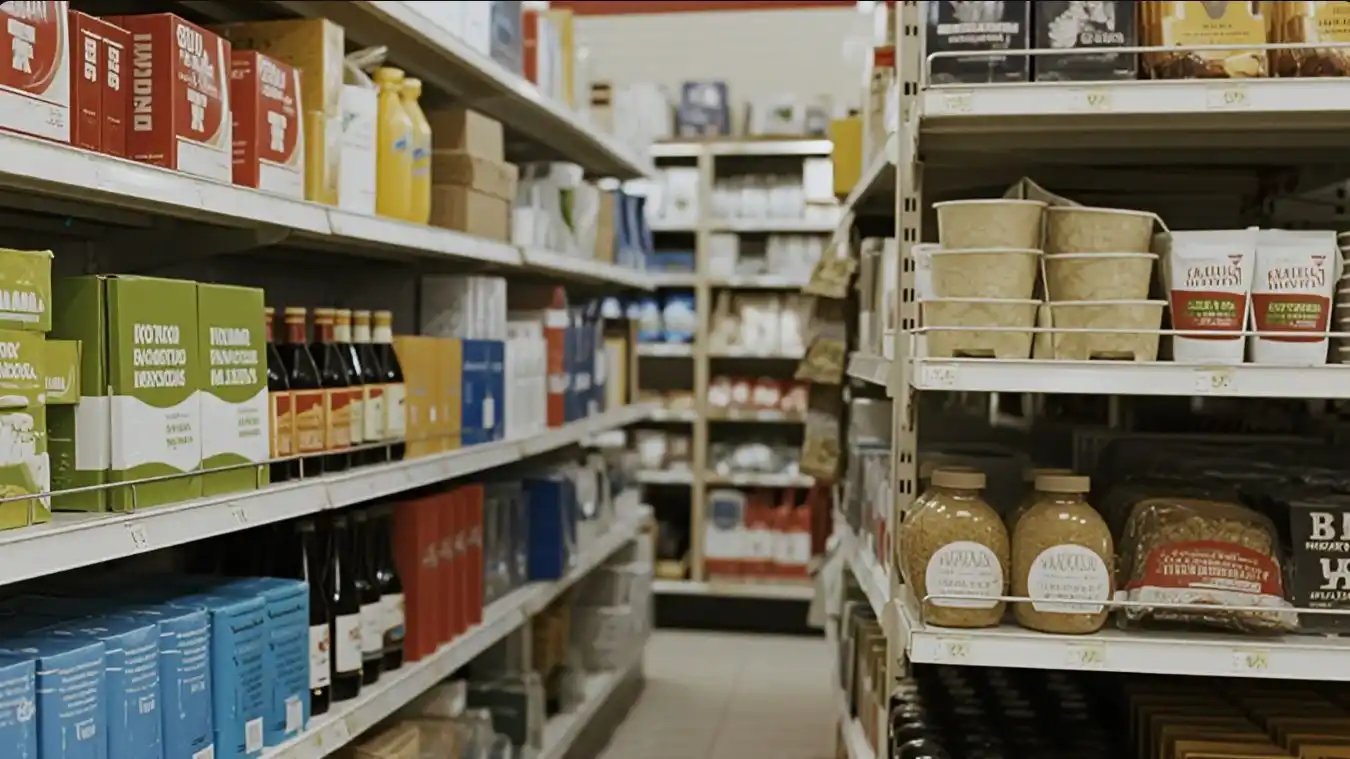Ngành quản trị dự án xây dựng công trình cấp khí đòi hỏi sự chính xác và kiến thức chuyên sâu về các thuật ngữ chuyên ngành. Bộ từ vựng này giúp người học nắm vững các khái niệm quan trọng như quy trình quản lý, công cụ kỹ thuật, và các yêu cầu về an toàn trong lĩnh vực cấp khí. Từ đó, người học có thể ứng dụng trong giao tiếp và làm việc với các đối tác quốc tế, cũng như nâng cao năng lực chuyên môn của mình.
Từ vựng nghề quản trị dự án xây dựng công trình cấp khí
- Gas Distribution System – Hệ thống phân phối khí
- Pipeline Construction – Xây dựng đường ống
- Gas Infrastructure – Hạ tầng khí
- Pressure Regulation – Điều chỉnh áp suất
- Gas Meter Installation – Lắp đặt đồng hồ đo khí
- Safety Standards – Tiêu chuẩn an toàn
- Leak Detection – Phát hiện rò rỉ
- Pipeline Integrity – Tính toàn vẹn của đường ống
- Gas Flow Management – Quản lý dòng chảy khí
- Regulator Station – Trạm điều chỉnh áp suất
- Pipeline Inspection – Kiểm tra đường ống
- Compression Station – Trạm nén khí
- Gas Pressure Control – Kiểm soát áp suất khí
- Pipeline Maintenance – Bảo trì đường ống
- Gas Storage Facility – Cơ sở lưu trữ khí
- System Design – Thiết kế hệ thống
- Installation Procedures – Quy trình lắp đặt
- Project Scheduling – Lịch trình dự án
- Cost Estimation – Ước tính chi phí
- Risk Assessment – Đánh giá rủi ro
- Regulatory Compliance – Tuân thủ quy định
- Construction Management – Quản lý xây dựng
- Gas Quality Control – Kiểm soát chất lượng khí
- Flow Metering – Đo lường dòng chảy
- Project Budgeting – Dự toán ngân sách dự án
- Leak Prevention – Ngăn ngừa rò rỉ
- Emergency Response Plan – Kế hoạch ứng phó khẩn cấp
- Operational Efficiency – Hiệu quả hoạt động
- System Integration – Tích hợp hệ thống
- Pressure Testing – Kiểm tra áp suất
- Gas Supply Chain – Chuỗi cung ứng khí
- Field Survey – Khảo sát hiện trường
- Pipeline Safety – An toàn đường ống
- System Upgrades – Nâng cấp hệ thống
- Gas Handling Procedures – Quy trình xử lý khí
- Quality Assurance – Đảm bảo chất lượng
- Safety Protocols – Quy trình an toàn
- Project Documentation – Hồ sơ dự án
- Contract Management – Quản lý hợp đồng
- Construction Permits – Giấy phép xây dựng
- Gas Supply Management – Quản lý cung cấp khí
- Technical Specifications – Quy định kỹ thuật
- Material Procurement – Mua sắm vật liệu
- Compliance Audits – Kiểm tra tuân thủ
- Gas Leak Repair – Sửa chữa rò rỉ khí
- Engineering Analysis – Phân tích kỹ thuật
- Cost Control – Kiểm soát chi phí
- Gas Network Expansion – Mở rộng mạng lưới khí
- Construction Safety – An toàn xây dựng
- System Testing – Kiểm tra hệ thống
- Operational Procedures – Quy trình hoạt động
- Project Coordination – Phối hợp dự án
- Gas Delivery Systems – Hệ thống phân phối khí
- Flow Control – Kiểm soát dòng chảy
- Infrastructure Assessment – Đánh giá hạ tầng
- Gas Supply Forecasting – Dự đoán cung cấp khí
- Pipeline Replacement – Thay thế đường ống
- Gas Handling Equipment – Thiết bị xử lý khí
- Pressure Regulation Systems – Hệ thống điều chỉnh áp suất
- Design Review – Xem xét thiết kế
- Pipeline Routing – Định tuyến đường ống
- Emergency Shutdown – Ngừng hoạt động khẩn cấp
- Gas Quality Testing – Kiểm tra chất lượng khí
- Training Programs – Chương trình đào tạo
- Project Milestones – Cột mốc dự án
- Regulatory Filings – Hồ sơ quy định
- Pipeline Design – Thiết kế đường ống
- Resource Allocation – Phân bổ tài nguyên
- Safety Inspections – Kiểm tra an toàn
- Gas System Monitoring – Giám sát hệ thống khí
- Contract Negotiation – Đàm phán hợp đồng
- Site Preparation – Chuẩn bị công trường
- System Optimization – Tối ưu hóa hệ thống
- Operational Monitoring – Giám sát hoạt động
- Maintenance Scheduling – Lịch trình bảo trì
- Performance Metrics – Các chỉ số hiệu suất
- Regulatory Updates – Cập nhật quy định
- Project Feasibility – Tính khả thi dự án
- Gas Equipment Testing – Kiểm tra thiết bị khí
- Technical Support – Hỗ trợ kỹ thuật
- Health and Safety Compliance – Tuân thủ sức khỏe và an toàn
- System Reliability – Độ tin cậy hệ thống
- Gas Safety Training – Đào tạo an toàn khí
- Environmental Impact – Tác động môi trường
- Budget Tracking – Theo dõi ngân sách
- Project Risk Management – Quản lý rủi ro dự án
- Resource Management – Quản lý tài nguyên
- Process Improvement – Cải tiến quy trình
- Regulatory Approvals – Phê duyệt quy định
- Construction Safety Plans – Kế hoạch an toàn xây dựng
- Installation Testing – Kiểm tra lắp đặt
- Gas Distribution Network – Mạng lưới phân phối khí
- Equipment Maintenance – Bảo trì thiết bị
- Operational Risk Assessment – Đánh giá rủi ro hoạt động
- Safety Compliance – Tuân thủ an toàn
- Gas System Evaluation – Đánh giá hệ thống khí
- Process Documentation – Hồ sơ quy trình
- Gas Pipeline Operations – Hoạt động đường ống khí
- System Reliability Testing – Kiểm tra độ tin cậy hệ thống
- Construction Quality Control – Kiểm soát chất lượng xây dựng
Bài viết sử dụng thuật ngữ trên
- The gas distribution system needs to be updated to meet the growing demand.
- We are in the pipeline construction phase of the project.
- The gas infrastructure includes pipelines, storage facilities, and distribution systems.
- Effective pressure regulation is essential for safe gas distribution.
- The team is working on the gas meter installation for the new residential area.
- Adhering to safety standards is crucial for protecting workers and the public.
- Leak detection technology has improved significantly in recent years.
- Ensuring pipeline integrity is vital for preventing gas leaks and accidents.
- Gas flow management helps in maintaining consistent pressure across the network.
- The regulator station controls the pressure of gas flowing through the pipelines.
- Pipeline inspection is conducted regularly to ensure the system’s safety.
- A new compression station is being built to increase gas flow capacity.
- Gas pressure control systems prevent over-pressurization in pipelines.
- Regular pipeline maintenance helps avoid unexpected failures and downtime.
- The gas storage facility will hold excess gas during low-demand periods.
- The system design includes detailed plans for all pipeline routes and components.
- Following proper installation procedures ensures that the system functions correctly.
- The project scheduling needs to account for weather and supply chain delays.
- Cost estimation for the new pipeline involves material, labor, and contingency costs.
- Risk assessment identifies potential hazards and mitigation strategies.
- Regulatory compliance ensures that all construction activities meet legal requirements.
- Construction management oversees all aspects of the building process.
- Gas quality control measures ensure that the gas meets safety and purity standards.
- Flow metering is used to measure the amount of gas passing through the system.
- Accurate project budgeting is crucial for the successful completion of the project.
- Implementing leak prevention measures reduces the risk of hazardous incidents.
- The emergency response plan outlines procedures for dealing with gas leaks and accidents.
- Operational efficiency improvements can lead to reduced costs and better performance.
- System integration ensures that all components of the gas network work together seamlessly.
- Pressure testing verifies that pipelines can handle the required pressures safely.
- The gas supply chain includes production, transportation, and distribution of gas.
- Field survey data is used to plan the most efficient pipeline routes.
- Pipeline safety protocols are in place to prevent accidents and ensure safe operation.
- System upgrades are planned to increase capacity and reliability.
- Proper gas handling procedures are crucial for safe operations and minimizing risks.
- Quality assurance processes are followed to maintain high standards of construction.
- Safety protocols are established to protect workers and ensure safe operations.
- The project documentation includes all plans, permits, and regulatory approvals.
- Contract management ensures that all parties fulfill their obligations under the contract.
- Construction permits are required before starting any new building activities.
- Gas supply management involves monitoring and controlling gas delivery to consumers.
- Technical specifications detail the requirements for materials and construction methods.
- Material procurement involves sourcing and purchasing the necessary supplies for construction.
- Compliance audits ensure that all activities comply with regulations and standards.
- Gas leak repair must be conducted immediately to prevent accidents and ensure safety.
- Engineering analysis helps in assessing the performance and safety of the gas system.
- Cost control measures are used to keep the project within budget.
- Gas network expansion plans include adding new pipelines and facilities to meet growing demand.
- Construction safety practices are essential to prevent accidents on the job site.
- System testing ensures that all components function correctly before the system goes live.
- Operational procedures define how the gas system should be operated and maintained.
- Project coordination involves managing various teams and tasks to ensure project success.
- Gas delivery systems are designed to ensure efficient and safe distribution of gas.
- Flow control systems regulate the rate of gas flow through the pipelines.
- Infrastructure assessment evaluates the condition and performance of existing gas facilities.
- Gas supply forecasting predicts future gas demand to plan for capacity requirements.
- Pipeline replacement is necessary when existing pipelines become outdated or damaged.
- Gas handling equipment includes compressors, valves, and meters used in gas distribution.
- Pressure regulation systems maintain appropriate pressure levels in the gas network.
- Design review ensures that all plans and specifications meet project requirements.
- Pipeline routing determines the most efficient path for the gas pipelines.
- Emergency shutdown procedures are in place to quickly stop gas flow in case of an emergency.
- Gas quality testing ensures that the gas meets required standards before distribution.
- Training programs are provided to ensure that staff are skilled in operating and maintaining the system.
- Project milestones are key achievements that mark progress in the project timeline.
- Regulatory filings involve submitting required documents to authorities for approval.
- Pipeline design includes planning the layout and materials used for construction.
- Resource allocation involves assigning the necessary resources to various parts of the project.
- Safety inspections are conducted to ensure compliance with safety regulations.
- Gas system monitoring tracks the performance and operation of the gas network.
- Contract negotiation is the process of discussing and agreeing on contract terms with vendors and contractors.
- Site preparation includes clearing and setting up the construction site for pipeline installation.
- System optimization involves improving the performance and efficiency of the gas network.
- Operational monitoring ensures that the gas system operates smoothly and efficiently.
- Maintenance scheduling plans regular upkeep and repairs to prevent system failures.
- Performance metrics are used to measure the effectiveness and efficiency of the gas system.
- Regulatory updates ensure that the project complies with the latest laws and regulations.
- Project feasibility assesses whether the project can be completed within the given constraints.
- Gas equipment testing ensures that all equipment functions properly before it is put into service.
- Technical support provides assistance with troubleshooting and resolving issues with the gas system.
- Health and safety compliance ensures that all aspects of the project meet health and safety regulations.
- System reliability is essential for ensuring consistent and safe gas delivery.
- Gas safety training educates workers on safe practices and emergency procedures.
- Environmental impact assessments evaluate the effects of the project on the surrounding environment.
- Budget tracking monitors expenditures and ensures the project stays within budget.
- Project risk management identifies potential risks and develops strategies to mitigate them.
- Resource management ensures that all resources are used efficiently and effectively.
- Process improvement focuses on enhancing the efficiency and effectiveness of gas system operations.
- Regulatory approvals are required to ensure compliance with legal and safety standards.
- Construction safety plans outline measures to protect workers and ensure safe construction practices.
- Installation testing verifies that newly installed systems and equipment operate correctly.
- Gas distribution network includes all the pipelines and facilities used to deliver gas to consumers.
- Equipment maintenance ensures that all machinery and tools are in good working condition.
- Operational risk assessment evaluates potential risks that could impact the operation of the gas system.
- Safety compliance ensures that all operations adhere to established safety standards.
- Gas system evaluation assesses the overall performance and efficiency of the gas distribution system.
- Process documentation includes all records and reports related to system operations and maintenance.
- Gas pipeline operations involve managing the day-to-day functioning of gas pipelines.
- System reliability testing ensures that the gas system consistently performs as expected.
- Construction quality control involves monitoring and verifying the quality of construction work.
Bài tập
- The new __________ will enhance the efficiency of our gas supply.
- We need to complete the __________ for the new gas pipeline by next month.
- Upgrading the __________ is essential for improving delivery capacity.
- The __________ system helps regulate the pressure of the gas flow.
- Proper __________ ensures accurate measurement of gas usage.
- Adhering to __________ is crucial for worker and public safety.
- Advanced __________ techniques are used to identify leaks quickly.
- Maintaining __________ is vital for preventing gas leaks and ensuring safety.
- Effective __________ is critical for managing the flow of gas through pipelines.
- The __________ is used to control the gas pressure in the network.
- Regular __________ are conducted to ensure pipeline safety.
- The new __________ will increase our capacity to compress and distribute gas.
- __________ systems are essential for preventing excessive pressure in pipelines.
- __________ helps in avoiding breakdowns and extending the lifespan of the pipeline.
- The __________ will store excess gas during periods of low demand.
- The __________ outlines all components and their arrangements in the system.
- Following correct __________ ensures that the installation process is efficient.
- We need to review the __________ to ensure we stay on track with the timeline.
- Accurate __________ is necessary to manage the project’s financial resources effectively.
- Conducting a thorough __________ helps in identifying potential risks.
- Ensuring __________ means all construction work adheres to legal and safety requirements.
- __________ involves overseeing all aspects of the construction project.
- Implementing __________ measures guarantees that the gas quality remains high.
- __________ allows us to monitor how much gas is passing through the system.
- Proper __________ helps manage costs and ensures the project stays within budget.
- We need to focus on __________ to prevent any potential hazards.
- The __________ includes steps for managing incidents and emergencies.
- Improving __________ can lead to better performance and lower costs.
- __________ ensures all components of the gas system work together effectively.
- __________ helps confirm that pipelines can handle the pressure required.
- The __________ is an essential part of the gas supply chain.
- A detailed __________ is required to plan the most effective pipeline routes.
- __________ protocols are established to prevent accidents and ensure safe operations.
- We plan to make several __________ to enhance the current system.
- The __________ outlines procedures for handling and processing gas.
- __________ ensures that construction work meets the required quality standards.
- Following established __________ is necessary for maintaining safety in operations.
- The __________ includes all necessary approvals, permits, and plans for the project.
- Effective __________ helps manage agreements and expectations with contractors.
- Securing the right __________ is mandatory before starting construction.
- __________ involves managing the delivery of gas to various consumers efficiently.
- Detailed __________ specify how materials and systems should be implemented.
- __________ involves sourcing and obtaining all necessary materials for the project.
- Conducting __________ verifies that all project activities are compliant with regulations.
- Immediate __________ is crucial to address any gas leaks or issues promptly.
- __________ is used to assess how well the gas system performs under different conditions.
- Implementing effective __________ ensures that the project stays on budget.
- Expanding the __________ involves adding new pipelines and facilities to meet demand.
- __________ ensures that construction activities are carried out safely.
- Comprehensive __________ confirms that all system components work as intended.
- Following __________ helps ensure smooth operation and maintenance of the system.
- __________ involves coordinating tasks and teams to ensure project success.
- __________ ensures the safe and effective delivery of gas to customers.
- Effective __________ manages how gas flow is regulated throughout the network.
- An __________ evaluates the condition and performance of existing infrastructure.
- Accurate __________ helps predict future gas needs and plan accordingly.
- __________ is necessary to replace outdated or damaged pipelines.
- Proper __________ ensures that all equipment used in gas distribution functions correctly.
- __________ systems are used to maintain optimal pressure levels within the network.
- A thorough __________ helps ensure that designs meet all project requirements.
- __________ determines the optimal path for pipeline installations.
- __________ procedures are critical for quickly stopping gas flow in emergencies.
- Routine __________ ensures that the gas being distributed meets all required standards.
- __________ are essential for ensuring that all personnel are skilled in their roles.
- Meeting __________ helps track progress and measure achievements throughout the project.
- Submitting __________ ensures that all legal requirements are met.
- Effective __________ is crucial for planning and laying out the pipeline system.
- __________ ensures that resources are appropriately allocated to different project areas.
- Regular __________ help ensure all safety regulations are followed.
- Continuous __________ is necessary for monitoring the performance of the gas system.
- Successful __________ involves negotiating terms and agreements with various stakeholders.
- Proper __________ prepares the construction site for the installation of pipelines.
- Implementing __________ improves the efficiency and performance of the gas network.
- Effective __________ ensures that the gas system operates efficiently and safely.
- Scheduling regular __________ helps prevent system failures and prolong equipment life.
- __________ measure the success and efficiency of the gas system operations.
- Staying updated with __________ ensures compliance with the latest regulations.
- Assessing __________ helps determine if the project is feasible within the given constraints.
- __________ confirms that all equipment meets operational standards before use.
- Providing __________ assists with resolving technical issues and ensuring smooth operations.
- Ensuring __________ helps maintain a safe working environment and comply with regulations.
- High __________ is necessary for reliable and consistent gas delivery.
- __________ provides training on best practices and emergency procedures.
- Conducting __________ helps understand and mitigate the environmental impact of the project.
- Effective __________ ensures the project remains within financial limits.
- Implementing __________ helps identify and manage potential project risks.
- __________ ensures that all project resources are used effectively.
- Continuous __________ leads to better processes and system improvements.
- Obtaining __________ is essential for meeting all legal and safety standards.
- Detailed __________ ensure that construction work adheres to safety protocols.
- Performing __________ confirms that all installations meet operational standards.
- The __________ includes all components involved in delivering gas to end-users.
- Regular __________ ensures that all machinery and tools are maintained properly.
- Assessing __________ helps identify potential risks that could affect operations.
- Ensuring __________ helps meet all safety and operational standards.
- __________ evaluates the overall effectiveness and reliability of the gas distribution system.
- Keeping accurate __________ provides a comprehensive record of operations and maintenance.
- Managing __________ involves overseeing the daily operations of gas pipelines.
- Conducting __________ ensures that the system is consistently reliable and efficient.
- Implementing __________ ensures high standards of construction quality.
Đáp án
- gas distribution system
- pipeline construction
- gas infrastructure
- pressure regulation
- gas meter installation
- safety standards
- leak detection
- pipeline integrity
- gas flow management
- regulator station
- pipeline inspection
- compression station
- pressure control
- pipeline maintenance
- gas storage facility
- system design
- installation procedures
- project scheduling
- cost estimation
- risk assessment
- regulatory compliance
- construction management
- gas quality control
- flow metering
- project budgeting
- leak prevention
- emergency response plan
- operational efficiency
- system integration
- pressure testing
- gas supply chain
- field survey
- pipeline safety
- system upgrades
- gas handling procedures
- quality assurance
- safety protocols
- project documentation
- contract management
- construction permits
- gas supply management
- technical specifications
- material procurement
- compliance audits
- gas leak repair
- engineering analysis
- cost control
- network expansion
- construction safety
- system testing
- operational procedures
- project coordination
- gas delivery systems
- flow control
- infrastructure assessment
- gas supply forecasting
- pipeline replacement
- gas handling equipment
- pressure regulation systems
- design review
- pipeline routing
- emergency shutdown
- gas quality testing
- training programs
- project milestones
- regulatory filings
- pipeline design
- resource allocation
- safety inspections
- system monitoring
- contract negotiation
- site preparation
- system optimization
- operational monitoring
- maintenance scheduling
- performance metrics
- regulatory updates
- project feasibility
- equipment testing
- technical support
- health and safety compliance
- system reliability
- gas safety training
- environmental impact
- budget tracking
- project risk management
- resource management
- process improvement
- regulatory approvals
- construction quality control
- installation testing
- gas distribution network
- equipment maintenance
- operational risk assessment
- safety compliance
- system evaluation
- process documentation
- pipeline operations
- system reliability testing
- construction quality control











